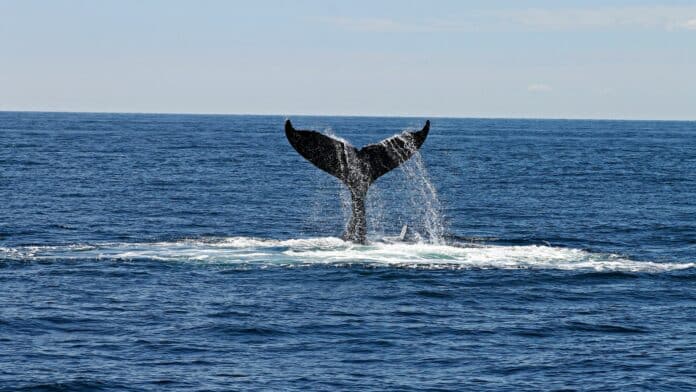Marine mammals are highly adapted to living underwater. One of the most challenging aspects of this environment is the extreme pressure that animals experience at increasing depth. This condition increases the need for brain protection from pulsatile blood flow, something experienced by all mammals.
A new study by the University of British Columbia suggests that special blood vessels in whale brains may protect them from pulses caused by swimming.
There are numerous hypotheses on the precise function of the “retia mirabilia,” or “wonderful net,” networks of blood arteries that surround the brain and spine of a whale. However, UBC zoologists now think they have the answer, and computer modeling supports their claims.
When galloping, land mammals like horses experience “pulses” in their blood, where blood pressures inside the body rise and fall with every stride. In a new study, the main author Dr. Margo Lillie and her team provide the first suggestion that whales, which swim with dorso-ventral movements, also experience the same phenomenon. And they may have discovered why whales avoid long-term brain damage.
Dr. Lillie, a research associate emerita in the UBC department of zoology, said, “In all mammals, average blood pressure is higher in arteries, or the blood exiting the heart than in veins. This difference in pressure drives the blood flow in the body, including through the brain. However, locomotion can forcefully move blood, causing spikes in pressure or ‘pulses’ in the brain. The difference in pressure between the blood entering and exiting the brain for these pulses can cause damage.”
“Long-term damage of this kind can lead to dementia in human beings. But while horses deal with the pulses by breathing in and out, whales hold their breath when diving and swimming. So if cetaceans can’t use their respiratory system to moderate pressure pulses, they must have found another way to deal with the problem.”
Scientists noted, “The retia use a ‘pulse-transfer’ mechanism to ensure there is no difference in blood pressure in the cetacean’s brain during movement, on top of the average difference. Essentially, rather than dampening the pulses that occur in the blood, the retia transfer the pulse in the arterial blood entering the brain to the venous blood exiting, keeping the same ‘amplitude’ or strength of pulse and so, avoiding any difference in pressure in the brain itself.”
Fluking frequency was one of the biomechanic factors that scientists obtained from 11 different species of cetaceans and entered into a computer model.
Senior author Dr. Robert Shadwick, professor emeritus in the UBC department of zoology, said, “Our hypothesis that swimming generates internal pressure pulses is new, and our model supports our prediction that locomotion-generated pressure pulses can be synchronized by a pulse transfer mechanism that reduces the pulsatility of resulting flow by up to 97 percent.”
“The model could be used to ask questions about other animals and what’s happening with their blood pressure pulses when they move, including humans. The hypothesis still needs to be tested directly by measuring blood pressures and flow in the brain of swimming cetaceans, this is currently not ethically and technically possible, as it would involve putting a probe in a live whale.”
“As interesting as they are, they’re essentially inaccessible. They are the biggest animals on the planet, possibly ever, and understanding how they manage to survive and live and do what they do is a fascinating piece of basic biology.”
Co-author Dr. Wayne Vogl, professor in the UBC department of cellular and physiological sciences, said, “Understanding how the thorax responds to water pressures at depth and how lungs influence vascular pressures would be an important next step. Of course, direct blood pressure measurements and brain flow would be invaluable, but not technically possible at this time.”
Journal Reference:
- M. A. Lillie, A. W. Vogl, et al. Retia mirabilia: Protecting the cetacean brain from locomotion-generated blood pressure pulses. Science. DOI: 10.1126/science.abn3315
